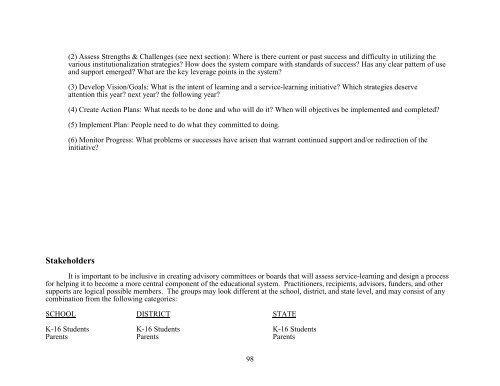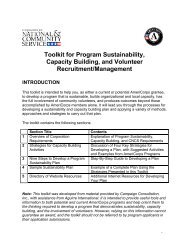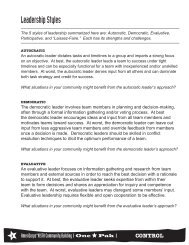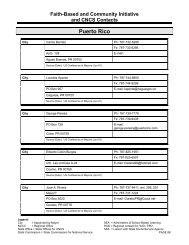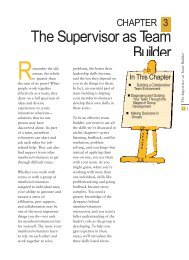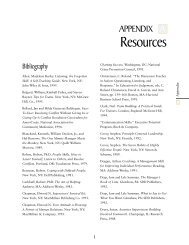MAKE IT LAST FOREVER: THE ... - National Service Resource Center
MAKE IT LAST FOREVER: THE ... - National Service Resource Center
MAKE IT LAST FOREVER: THE ... - National Service Resource Center
You also want an ePaper? Increase the reach of your titles
YUMPU automatically turns print PDFs into web optimized ePapers that Google loves.
(2) Assess Strengths & Challenges (see next section): Where is there current or past success and difficulty in utilizing the<br />
various institutionalization strategies? How does the system compare with standards of success? Has any clear pattern of use<br />
and support emerged? What are the key leverage points in the system?<br />
(3) Develop Vision/Goals: What is the intent of learning and a service-learning initiative? Which strategies deserve<br />
attention this year? next year? the following year?<br />
(4) Create Action Plans: What needs to be done and who will do it? When will objectives be implemented and completed?<br />
(5) Implement Plan: People need to do what they committed to doing.<br />
(6) Monitor Progress: What problems or successes have arisen that warrant continued support and/or redirection of the<br />
initiative?<br />
Stakeholders<br />
It is important to be inclusive in creating advisory committees or boards that will assess service-learning and design a process<br />
for helping it to become a more central component of the educational system. Practitioners, recipients, advisors, funders, and other<br />
supports are logical possible members. The groups may look different at the school, district, and state level, and may consist of any<br />
combination from the following categories:<br />
SCHOOL DISTRICT STATE<br />
K-16 Students K-16 Students K-16 Students<br />
Parents Parents Parents<br />
98


